Last week we joined the launch of #Bikeisbest campaign – to help support as many people as possible to choose travelling by bike over other forms of transport, especially cars. But what if you want to go cycling with kids? There are lots of options out there – and you don’t always have to splash out a fortune for a shiny new piece of kit, sometimes just borrowing something off a friend or purchasing something second hand is more than good enough.
Our contributor, Eva, decided to try out some different bike transport options for your kids, here’s what she thought and we hope this may inspire you to head out for more journeys with your kids.
When little legs and lungs can’t take you very far …
Our two kids, 5 and 3, love their bikes. They are also at the age where they are fiercely independent and like to do their own thing. But they can always go that far.
When we first had kids, we really didn’t want to have to wait five plus years before we could enjoy long family rides together – we also wanted them to grow up with experience of riding a bike for a decent length of time, using a bike rather than a car as a means of transport and recreation. So we needed the right equipment.
But what to choose amidst the terrifying array of potentially wallet-draining, garage-filling kit on the market?
We understood that getting the wrong kit could mean hours of whingeing, tantrums, or worse, putting our children off for life. So we asked a few friends who had similar aged children and who had the kit for me to test-drive…
The bike trailer
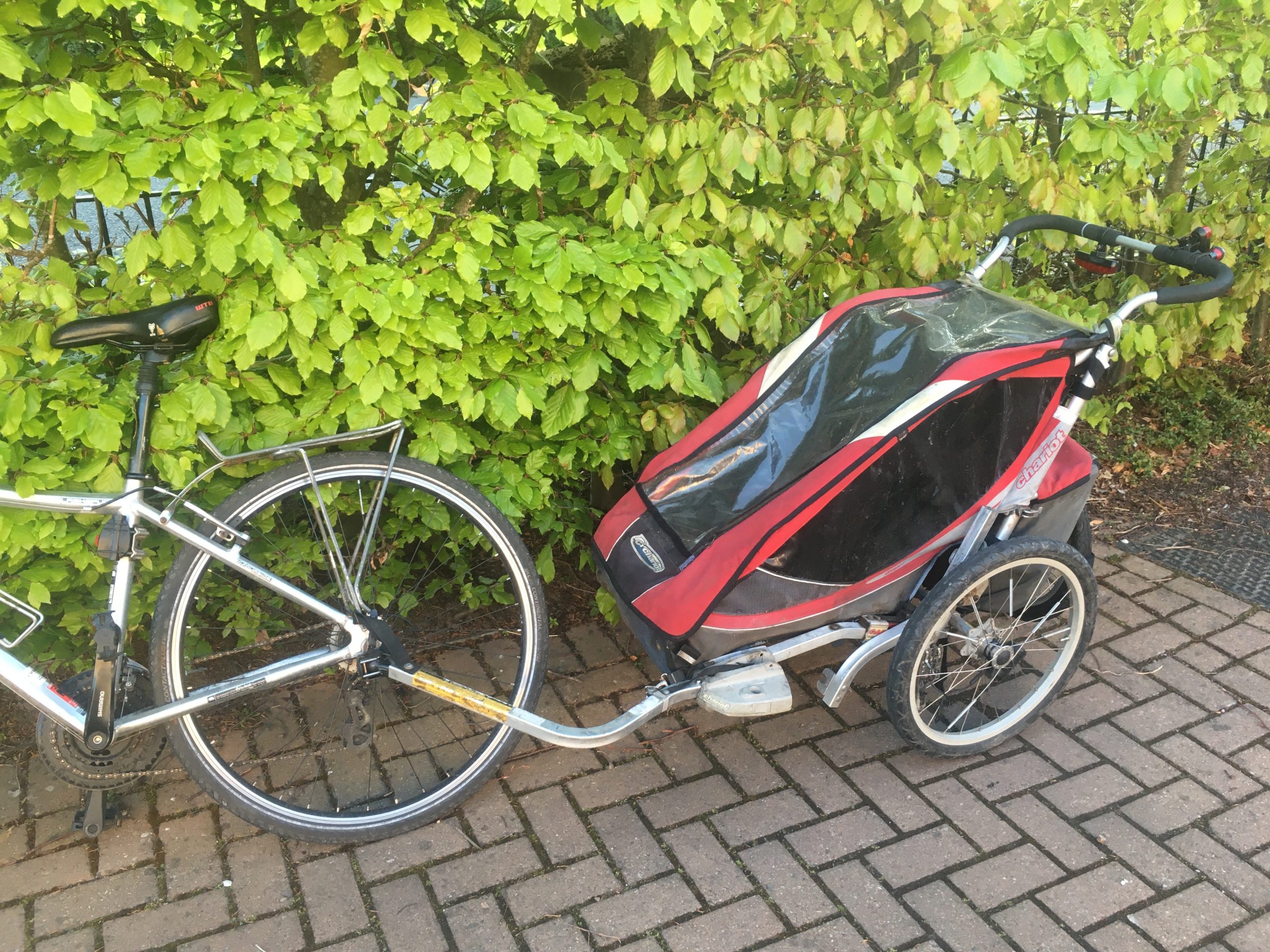
We already use a pretty old, but trustworthy Cougar Chariot 1, now made by Thule. It attaches with a ball and socket fitting on the rear wheel hub of the parent bike. It’s decently built, with a good frame and roll bar, a five-point harness (plus a special young baby seat). It was always perfect for a child that needed a nap in the middle of a long ride.
The weather-proofing is great – sun, wind, rain – and there’s even a net for any stray stones flicking up from the road. It also has a storage pocket at the back, and converts easily into a 3-wheeled buggy, which we used when we cycled to ParkRun. The best thing about the chariot is that it is handy for other activities, like shopping.
But it’s quite heavy. It’s no good for limited spaces – you need to take wider corners than normal, and there are gaps it won’t squeeze through. And don’t think about getting one onto a train, take it on holiday with you or park it in a bike rack.
One thing we noticed was that with a trailer, you create quite a distance between you and your child, so interaction between you is limited. Sometimes, though, that may be a good thing ….
Our trailer was designed for one child only – you can get them for two. The adverts picture the two children chatting to one another, but I know exactly what mine would do after an hour in there together side by side. Particularly as they sit behind you, not in front, anything could happen…
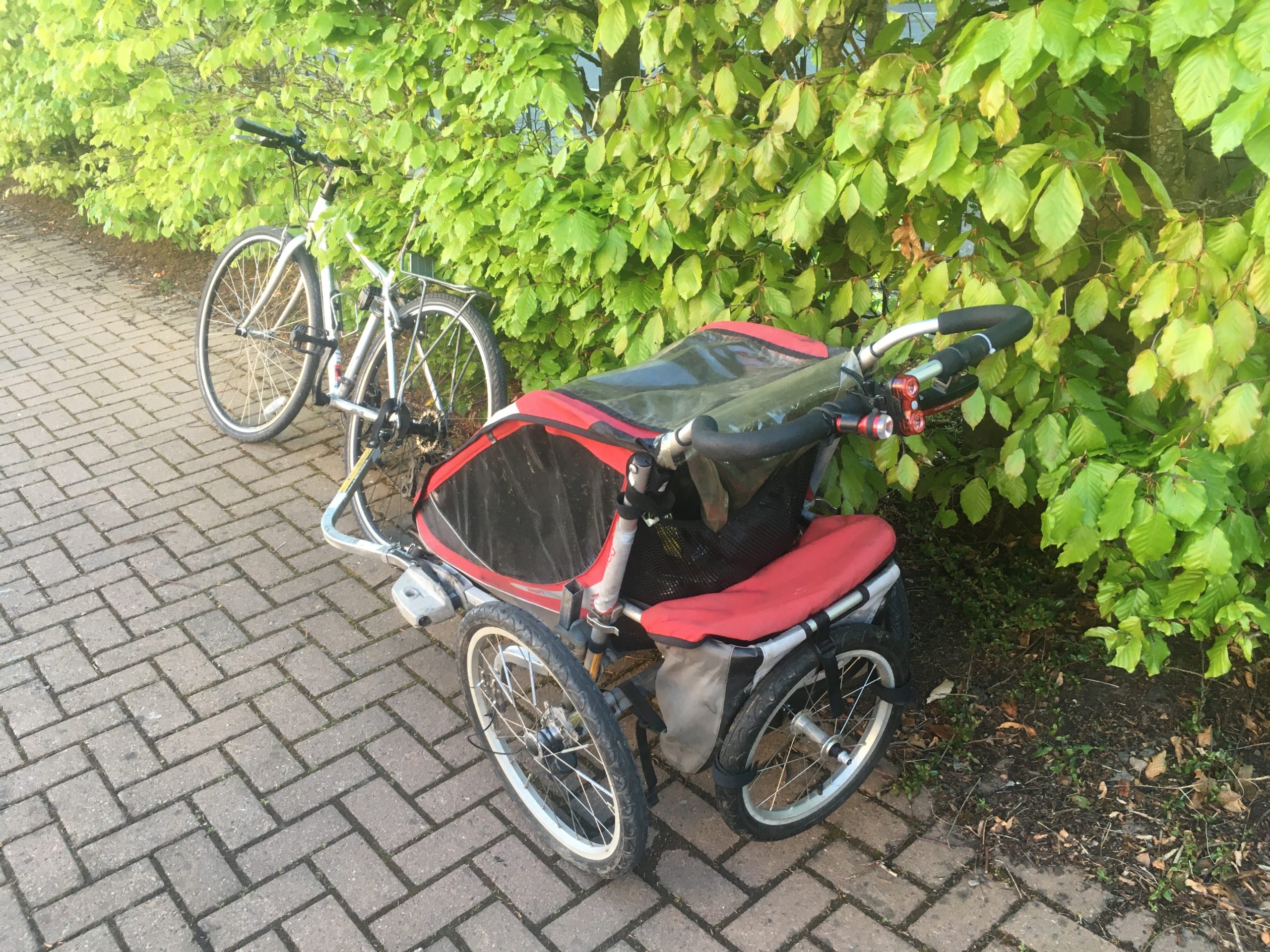
The other down-side is the boredom. With children who have their own bikes and increasingly like their independence, asking them to sit down for a long time is a lot.
Good for: naps, all weathers, ride/walk/runs, carrying stuff
Not so good for: hills, tight spaces, social interaction
The tandem hitch
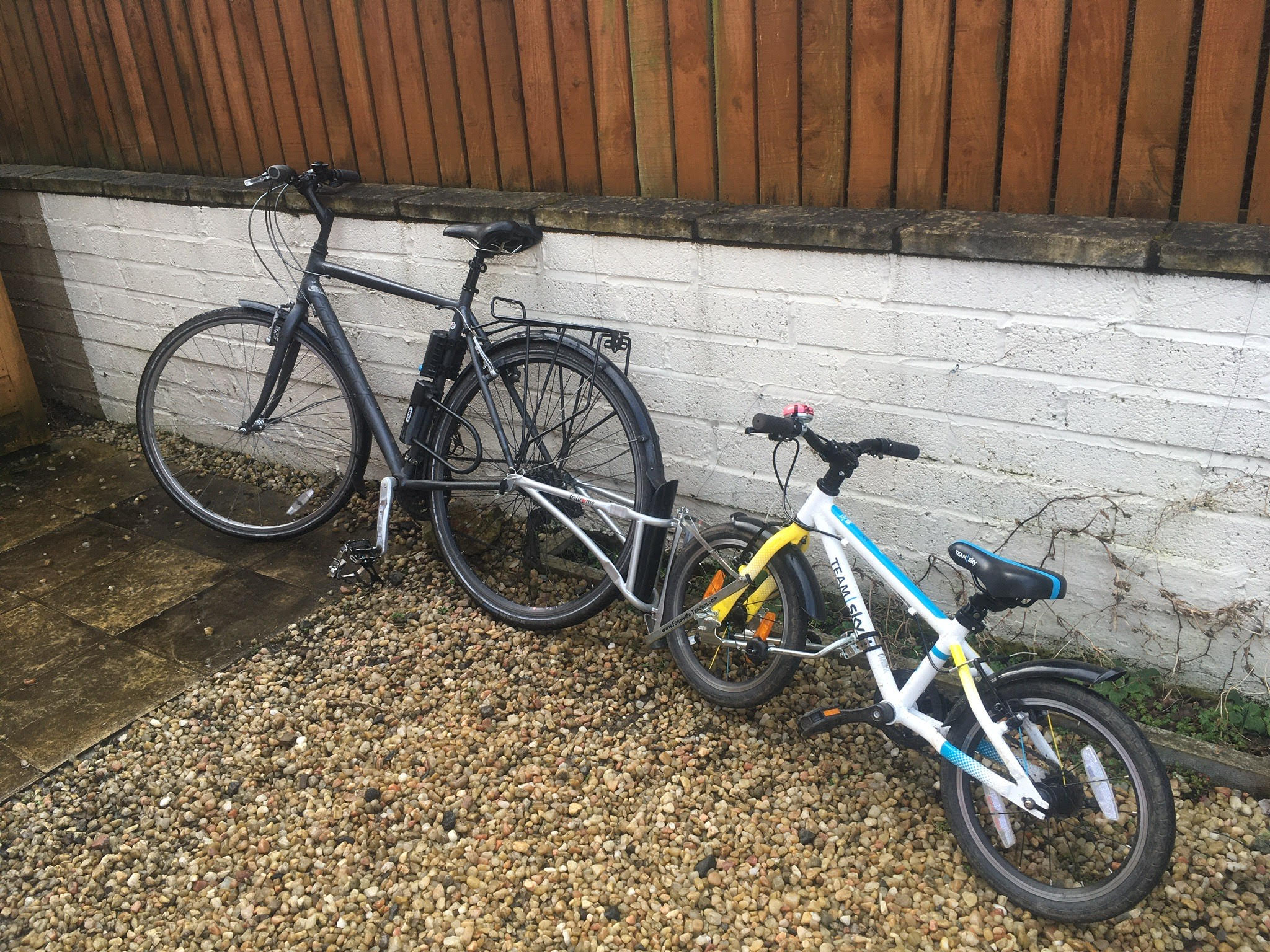
We tried out a friend’s Follow-Me Tandem hitch, which is basically an attachment that connects two wheels together like train carriages. This piece of kit fixes to the rear wheel hub of the parent bike and holds the front wheel of the child’s bike slightly above the ground, with a hinge between the two.
The good thing about this option is that you don’t actually have to by much new ‘kit’ – it is just something that allows you to connect your existing bikes together. And because it takes any bike, it lasts the test of time, even when your child is outgrowing bikes every few years. It’s solid if not a bit heavy, folds up when not in use, and you can definitely take it on a train, or on holiday.
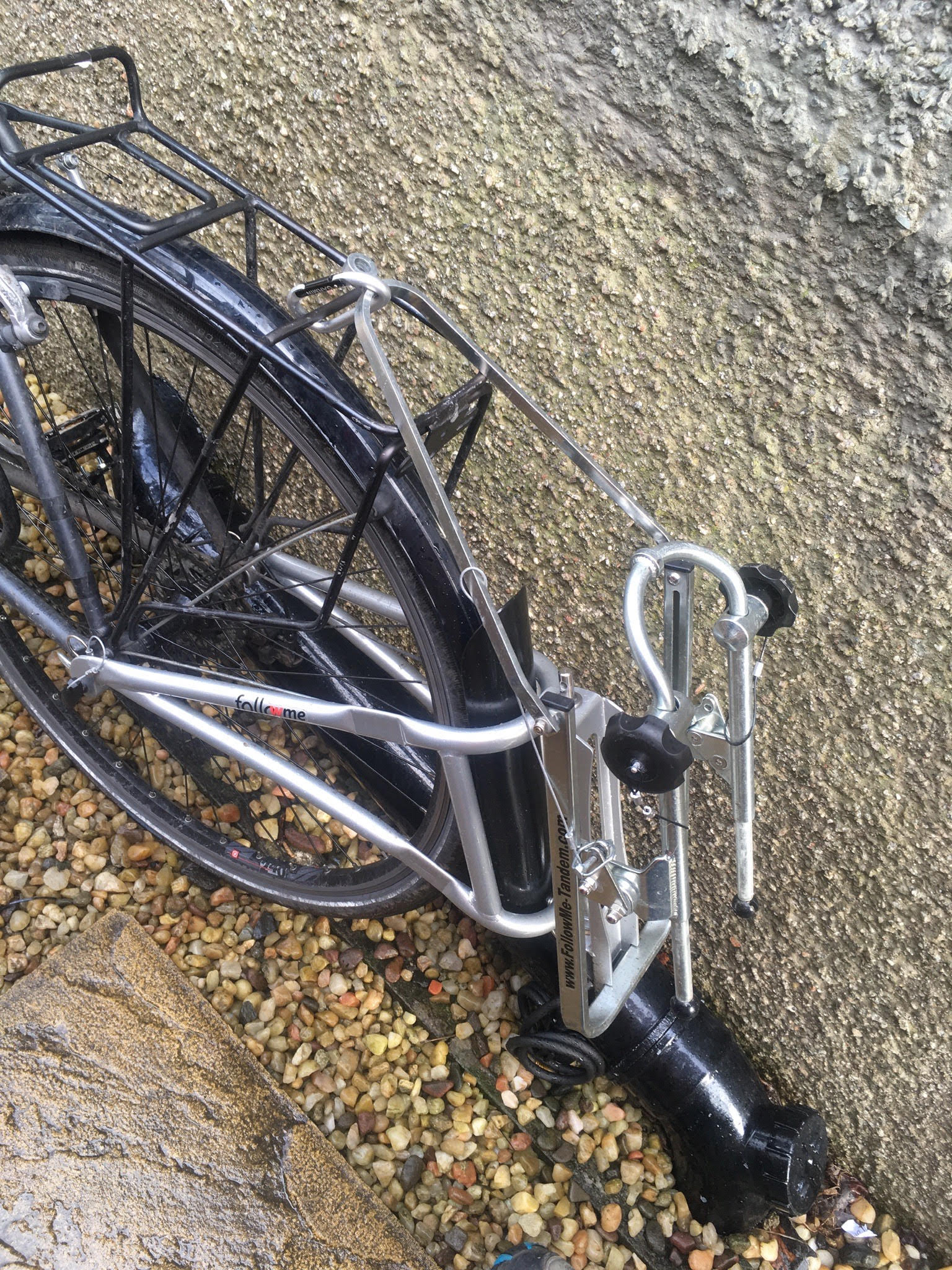
What we liked was that it’s really easy to transition between ‘cycling’ and ‘towing’ options when the need arises. When tired legs kick in, the child can easily clip in, and when they want to start cycling again, just clip them out.
This option also overcomes the ‘boredom’ aspect nicely. Even while being towed, they can feel like they are doing something by turning their pedals, even though the power is coming from you. A good option for the end of a long family cycle, or for return journeys after a long day out.
However, two bikes hinged together makes for a very long vehicle [see picture], so don’t try any tricky manoeuvres! You also need a co-operative child – make sure they know not to apply the brakes, or try to get off…
Good for: independence, public transport, holidays
Not so good for: uncooperative children, small spaces
The tagalong
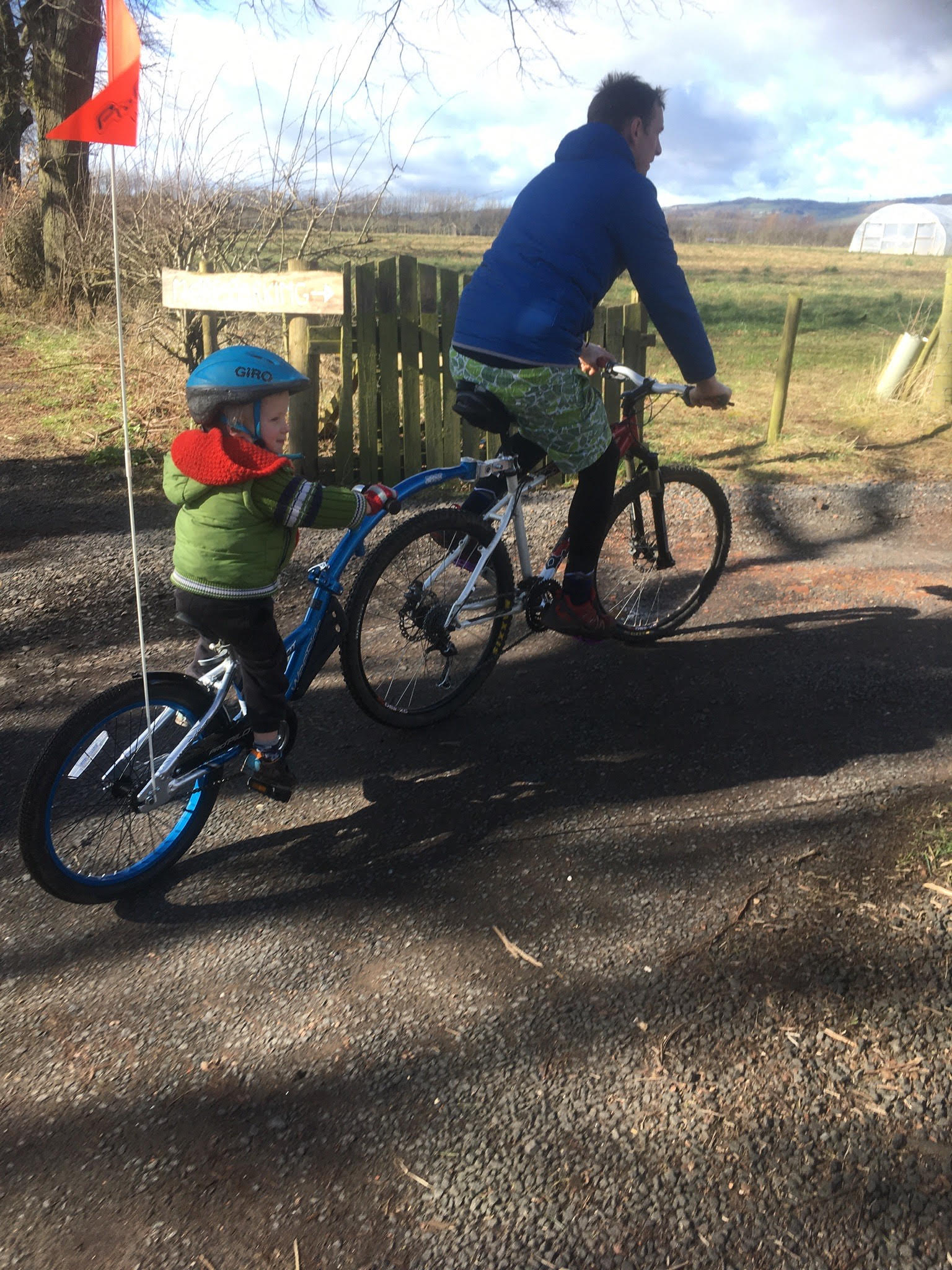
Next we tried a single-wheel tagalong bike, a WeeRide Propilot. This looks like the back half of a child’s bike (no front wheel) attached to the seat post of the parent bike. We were advised not to try a tagalong that only pivots on the seat post. Since seat posts are often not vertical, having the seat post as your pivot causes handling problems, with your child leaning out while cornering. This one we tried has a pivot on a bracket behind the seat post, so the bike follows the parent bike a lot better, and there is less instability for the child’s ride.
Because the child’s bike is missing the front wheel, they sit much closer to you, so there is much more interaction with you. It also makes the whole of your contraption a little less long, which may mean you get through tight gaps and onto public transport. Maybe.
However, these take a bit of getting used to, as the feel of the ride is definitely different. Because the connection between the bikes is higher up, there is a different pull on the parent bike, which can upset the steering. Like the tandem hitch, you also need a child who can balances and co-operates! Some models also don’t accommodate pannier racks, so your carrying capacity may be limited [see picture 6].
This bike won’t grow with the child, so the size of the model needs to be thought about to make it last for a few years. Also, there is still that risk that the need to assert independence sets in, and the child wants to take the lead. Then you’re in trouble.
Good for: shorter rides, busier roads, social interaction
Not so good for: long rides, carrying stuff, independence
The cargo (e-)bike
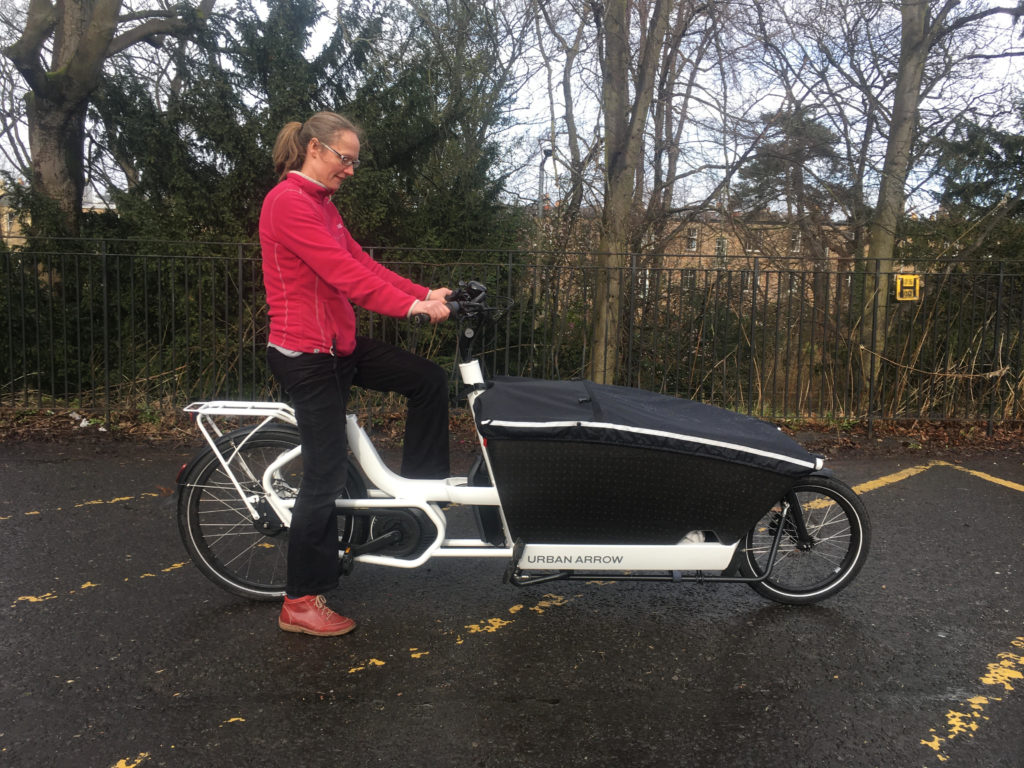
Finally, we tried a friend’s Urban Arrow (Family) electric cargo bike. Normal cargo bikes available too, but we had the luxury of trying an electric one. Though these machines are really expensive, this bike was bought for a city with hills, by a family with no car.
Thanks to its ‘electric-assist’, this bike rides like a dream – a definite advantage if you’re carrying heavier, or multiple, children. While faced with the slightest incline, it gives you a barely noticeable push that makes you feel like it’s you doing all the work.
The cargo section is really spacious, with a bench with three-point harnesses and rain cover, and the kids sit low to the ground, so great for stability.
However, it is so heavy, you wouldn’t want to run out of power or tip it over (yes, it has been done), and it is hard to manoeuvre at low speeds. It’s also really long and has a wide turning circle [see picture]. Because of its weight, you can hardly hoik it up a curb or find somewhere to park it, let alone bring it on holiday or on public transport. And because of its price tag, it’s the kind of bike you need to lock up securely (and have a shed big enough).
Again, the boredom question arises, as sitting children can get fed up, or argue with one another in a very tight space. But at least they are in front of you and you can see exactly who hit who!
Good for: hills, carrying heavy loads
Not so good for: public transport, tight spaces, parking
So what to get?
As readers of this blog will know only too well with their own bike purchases, it’s difficult to decide which option is the best – they all have different price tags and different benefits. Of course, if money and garage space weren’t tight, I’d probably find a use for all the kit to satisfy the varying needs of our family cycling over the years.
But before you spend, ask yourself why you need it and what kind of cycling environment you are most likely to cycle in. If the child needs to take a nap or have some quiet time, get a trailer. If you want your child to feel like they are cycling without having to put in the effort, get a tag-along. If you want the flexibility of chopping and changing from cycle to tow, get a tandem hitch. If you’re wanting something for hills with plenty of storage, or to replace the car, a cargo bike will do the job.
And once you’ve got it, use it lots! Get those kids sharing the passion you have too!